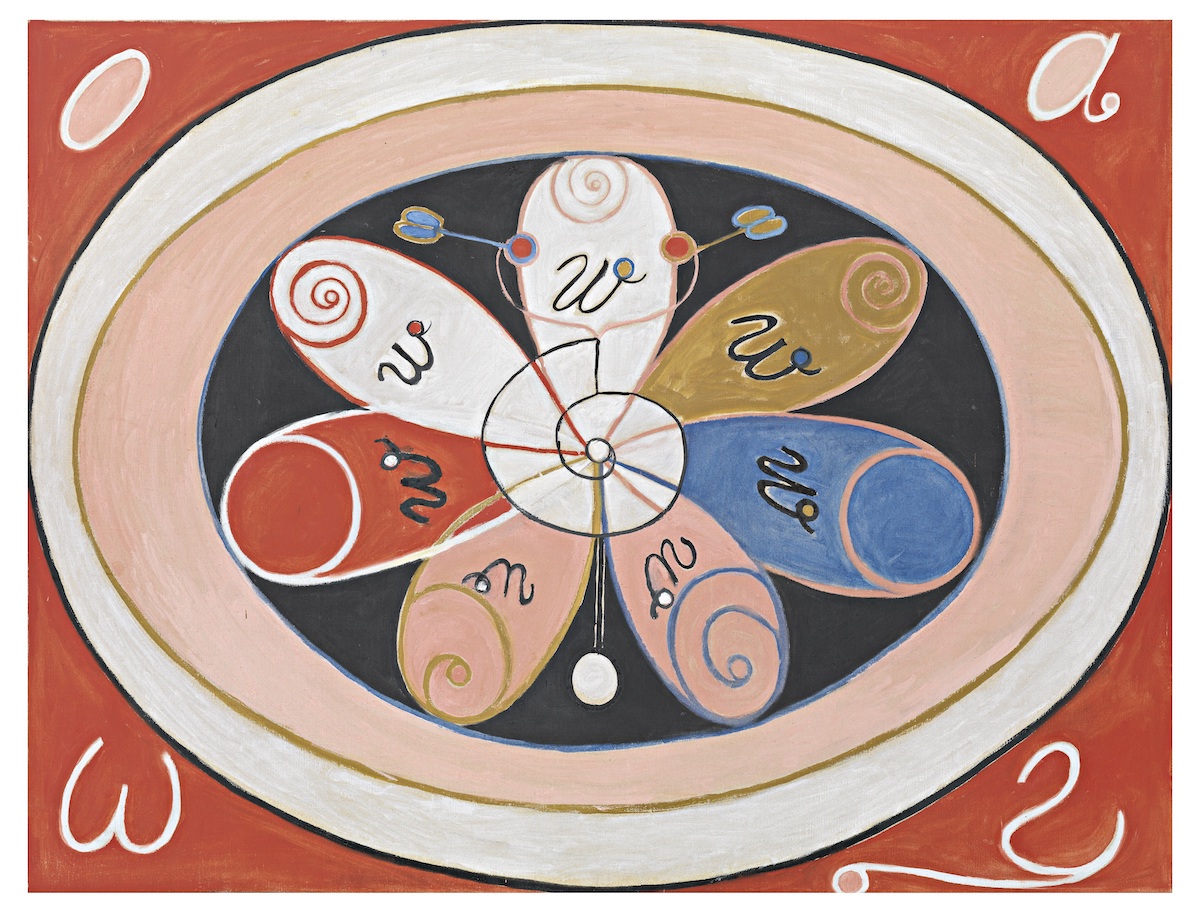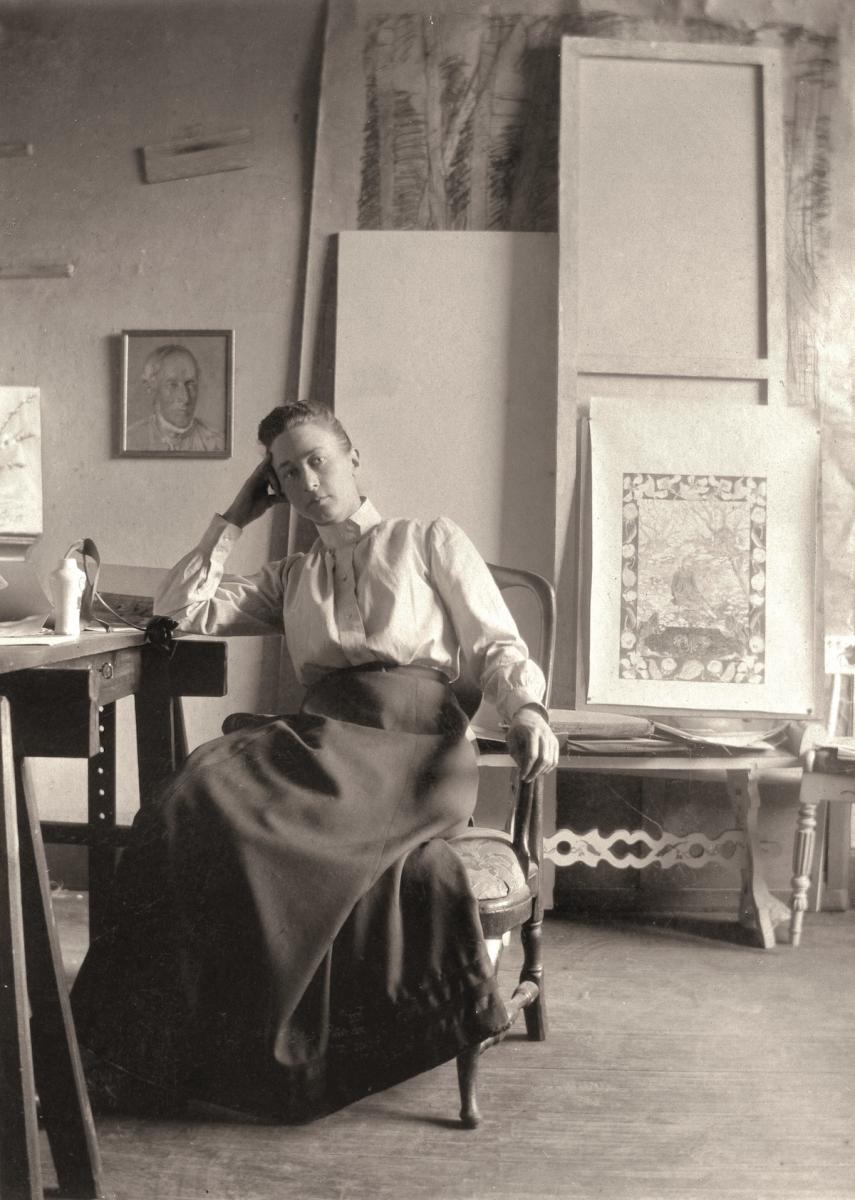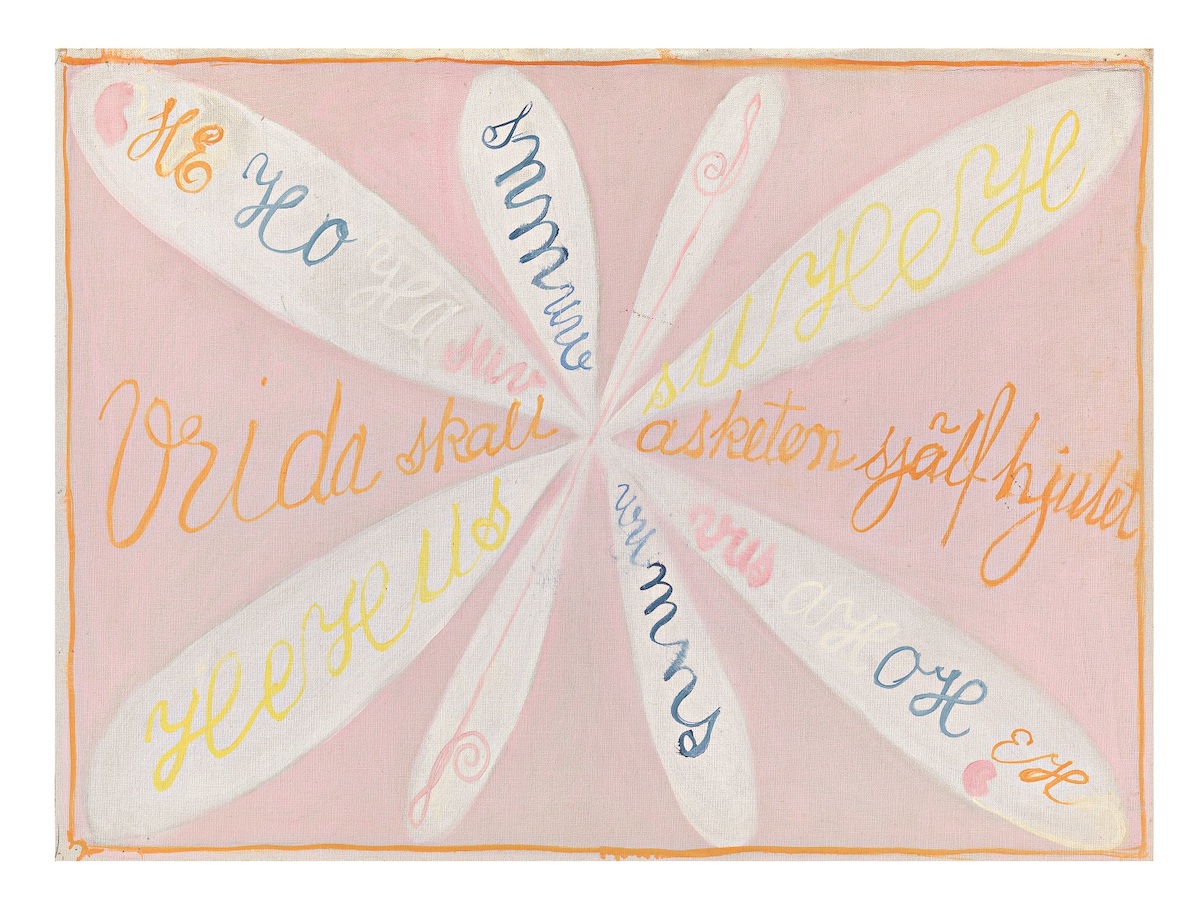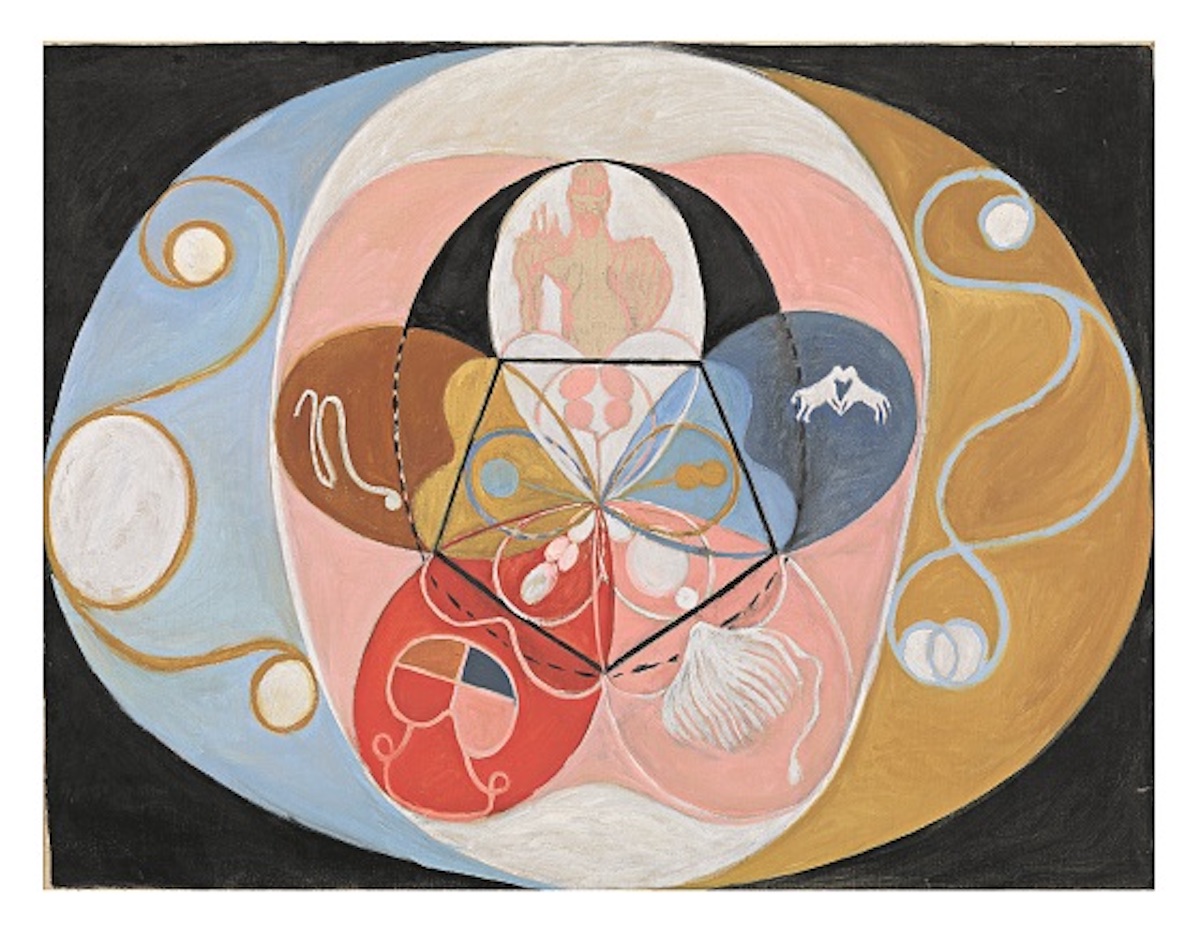This wonderful Cornish workshop and museum is dedicated to the legacy of studio pottery trailblazer Bernard Leach
6 questions answered about the mystic artist Hilma af Klint
6 questions answered about the mystic artist Hilma af Klint
14 Apr 2023
Long before the term ‘abstract art’ was coined, one trailblazing artist was forging the way, producing radical art that was shunned by contemporaries. As a major exhibition of her works prepares to open, Caroline Levisse examines the curious story of Hilma af Klint
 Svensk Grupp 6, nr. 15, Evolutionen, 1908. Image courtesy of the Hilma af Klint Foundation
Svensk Grupp 6, nr. 15, Evolutionen, 1908. Image courtesy of the Hilma af Klint Foundation
Can you set the scene for us?
At the start of the 20th century, abstract art was a truly awesome revolution.
It challenged one of the most accepted ideas about art since the Renaissance: that painting is an imitative art, reproducing the world.
The Russian artist Wassily Kandinsky showed non-figurative paintings for the first time in 1911 in Germany. Months later others displayed abstract works in Paris, among them František Kupka and Robert Delaunay. They were followed by many more, including Piet Mondrian.
It was a momentous development, giving an aura of greatness to those who did it first. So when, in 1986, abstract paintings done as early as 1906 were shown in Los Angeles, it sent shockwaves around the art world. What’s more, these striking works had been created by an unknown painter – a Swedish woman named Hilma af Klint. Should the story of abstract art be rewritten with a new starting point?
 Hilma af Klint in her studio at Hamngatan, Stockholm, c.1895. Image courtesy of the Hilma af Klint Foundation
Hilma af Klint in her studio at Hamngatan, Stockholm, c.1895. Image courtesy of the Hilma af Klint Foundation
Who was Hilma af Klint?
Af Klint was born in 1862, near Stockholm, into a family of marine officers and cartographers.
Showing early talent in drawing, she went on to study painting. After graduating with honours from Stockholm’s Royal Academy of Fine Arts, she was given a studio and made her name as a landscape and portrait painter, working in a naturalist, conventional style.
She had other interests, too, such as botany and science. She painted flowers and plants with rigorous precision. Other works reveal an interest in elements such as atoms.
Why is she referred to as a spiritual artist?
From 1897 to 1907 af Klint and four other women met weekly to pray, study and engage in spiritualist séances. They called themselves ‘The Five’ (De Fem). They meticulously recorded the messages revealed to them by spirits they called the ‘High Masters’.
During this time af Klint made her first spirit drawings, in which abstract patterns and symbols appeared. This was not unusual practice for a medium. In the 1860s in London, medium Georgiana Houghton made fascinating pictures during séances, many of colourful lines that do not represent anything recognisable.
In 1906 af Klint revealed to her friends that one of the High Masters, Amaliel, had instructed her to produce a series of paintings ‘on an astral plane’. This led to the dissolution of The Five; some thought the project would lead her to madness.
 Eros, No 5, 1907. Image courtesy of the Hilma af Klint Foundation
Eros, No 5, 1907. Image courtesy of the Hilma af Klint Foundation
What did af Klint do next?
She continued painting.
By 1915 she had created 193 works, called The Paintings for the Temple. At first the paintings were ‘dictated’ by spirits. She explained: ‘The pictures were painted directly through me, without any preliminary drawings, and with great force. I had no idea what the paintings were supposed to depict; nevertheless I worked swiftly and surely, without changing a single brushstroke.'
From 1912, resuming work after a hiatus, she did so more freely. She now described herself as an interpreter of the spirits’ messages. As years passed, she came to think of herself as more in control of the creative process.
What did the paintings show?
Af Klint made some 1,200 works. Her esoteric oeuvre is diverse. Some symbols recur, such as the spiral, shells, pyramids, circle, square and flowers, as well as some letters. There are also swans, crosses and occasional human figures. It is all very mysterious; none of it follows a known iconography. Af Klint’s was a secret knowledge.
 Svensk Grupp 6, nr. 14, Evolutionen, 1908. Image courtesy of the Hilma af Klint Foundation
Svensk Grupp 6, nr. 14, Evolutionen, 1908. Image courtesy of the Hilma af Klint Foundation
Where did it all lead?
Eventually af Klint decided the world was not ready for her art. When she died in 1944 her works went to her nephew, Erik af Klint, with the instruction that her paintings should not be shown for 20 years.
Erik kept the works (which he found odd), and in 1970 presented them to Stockholm’s Moderna Museet, only to be turned down. In 1986, finally, her art caught a curator’s attention. Maurice Tuchman, working on the exhibition The Spiritual in Art: Abstract Painting 1890-1985 (shown in Chicago and the Netherlands) included her works at the last minute.
Still, it was not until the 2010s that af Klint became more visible as an artist and exhibitions and publications increased. The 2013 exhibition at the Moderna Museet and the 2018 show at New York’s Guggenheim Museum were blockbusters.
Now Tate Modern is preparing to open a major exhibition focused on af Klint’s art alongside that of Piet Mondrian. With her work now acclaimed across the world, yet still dividing opinion, it is clear that af Klint’s art strikes a chord with today’s audience and scholars.
Is this because her work enables us to challenge the dominant, linear narrative about modern art? Does it question the male-dominated perspective, and the secular and formalist perspective (of art for art’s sake)? What is certain is that af Klint’s art shows that history is never still, nor written once and for all.
SEE
Hilma af Klint & Piet Mondrian: Forms of Life
Tate Modern
20 April–3 September
Find out more
Read Caroline’s whole feature in the latest issue of The Arts Society Magazine, out now and available exclusively to members and supporters of The Arts Society (to join, see theartssociety.org/member-benefits).
About the Author
Caroline Levisse
Caroline is an art historian who specialises in modern European art with a focus on Scandinavia; she is also an Arts Society Accredited Lecturer
JOIN OUR MAILING LIST
Become an instant expert!
Find out more about the arts by becoming a Supporter of The Arts Society.
For just £20 a year you will receive invitations to exclusive member events and courses, special offers and concessions, our regular newsletter and our beautiful arts magazine, full of news, views, events and artist profiles.
FIND YOUR NEAREST SOCIETY
MORE FEATURES
Ever wanted to write a crime novel? As Britain’s annual crime writing festival opens, we uncover some top leads
It’s just 10 days until the Summer Olympic Games open in Paris. To mark the moment, Simon Inglis reveals how art and design play a key part in this, the world’s most spectacular multi-sport competition



